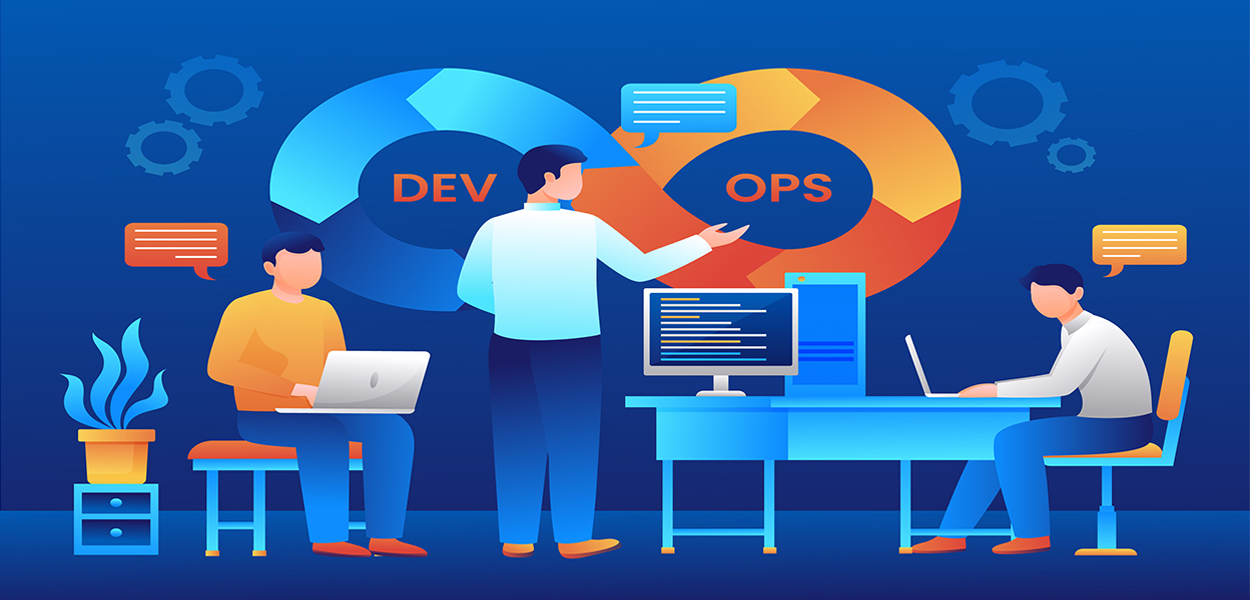How is DevOps related to cloud computing?
How is DevOps charting a new model for cloud development?
November 21, 202211:52 PM
How is DevOps related to cloud computing?
November 21, 202211:52 PM

Cloud and DevOps have joined at the hip. Most cloud-based development projects use DevOps, and the list is set to grow. Moreover, the advantages of using DevOps in cloud-based projects are becoming more established. These include speed-to-delivery of application development to meet the demands of business units more quickly; user demands that are quick to integrate back into the program; and fewer testing costs, deployments, and operations.
The article below will discuss how cloud developmentis evolving, how it's changing, why, and, perhaps most importantly, how an engineer in software can adjust to the changes. Then, we'll concentrate on how DevOps can change the game for general and cloud development.
At its heart, DevOps Process Flow is the automation of agile methods. The goal is to allow developers to meet business requirements in real-time. This means that DevOps can eliminate much of the latency that's been present for a long time in software development.
DevOps and cloud computing is simple to define:
Cloud computing is a centralized system. Computing enables DevOps automation with a common and central platform to test, deploy, and produce. In the past, it was the case that certain enterprise software didn't work with central software deployment. Cloud platforms solve many issues that arise with distributed complexity.
DevOps automation is now becoming cloud-centric. The majority of cloud providers, both private and public, allow DevOps through their systems, including continuous integration and continuous development tools. This close integration reduces the cost of on-premises DevOps automation tools and provides centralized oversight and control for a solid DevOps procedure. Many developers who join the process are amazed by how the governance system keeps them out of trouble, and it's simpler to manage this centrally through the cloud than trying to manage departments.
What is the motivation behind using DevOps as a technology that can help you get to the cloud? The need to streamline and speed up the development process has stopped expansion for many companies. Many stories are about industry titans who aren't able to buy businesses or leaders in marketing who aren't able to launch new products because IT can't manage the backlog of development.
As business leaders try to find ways to improve their application development processes by switching between waterfall and DevOps, they are also aware that DevOps alone will not help them. The delay in making the capital purchase of software and hardware hinders development, however, even when it's to be agile. Developers must wait for the capital resources to be installed before applications can be used.
When developing applications for clouds, the process must begin at the level of software engineering, not at the C-level. The benefits of developing cloud-based applications with the latest DevOps tools must be recognized by everyone involved in the process. People who don't understand will probably hinder development and may be unable to respond to the inevitable challenges encountered. (We might call this method "continuous adjustment.")
It's much more complicated than it appears, given the current state of DevOps instruments and cloud-based services. This isn't possible to do in serial order, considering the extensive dependencies mentioned earlier. The method that appears to be the most efficient is comprised of the steps below.
Training isn't going to save you, also. Leadership must originate from the developers, and there shouldn't be any doubt about the latest processes, tools, platforms, and daily practices.
As cloud computing and DevOps continue to show their advantages for enterprises, more CTOs and technology leaders will be working hard to eliminate the bureaucratic and technical hurdles hindering growth and limiting business opportunities. But the same companies must be able to compete by embracing the greater value of DevOps, which is continuous and flexible implementation. This concept is not widely understood. Some workers even criticize it in enterprise IT, seeing it as a route that will reduce productivity and app quality. However, when you add the cloud into the DevOps equation, you realize that companies are no longer in a position to choose.
However, the mindset of the developer and enterprise should change to reflect the concept of DevOps and how it's necessary to lead cloud development in the future. In the end, IT departments have to spend the largest of all budgets to help get through these transformations. They must also invest money without a clear objective of maximizing ROI, which makes corporate executives and shareholders mad.
The alternative of doing nothing means that you will fail. Other companies are more likely to beat your capabilities in terms of time to market with solutions and applications. Suppose you can set up your processes and applications in near-real time and operate in an agile and effective environment; the market rewards you for the effort. If you're not yet embarking on the process, now is the right time to begin.
Strategy
Design
Blockchain Solution
Development
Launching
Testing
Maintenance
Contact US!

Plot 378-379, Udyog Vihar Phase 4 Rd, near nokia building, Electronic City, Phase IV, Sector 19, Gurugram, Haryana 122015
Copyright © 2025 PerfectionGeeks Technologies | All Rights Reserved | Policy
Contact US!

Plot 378-379, Udyog Vihar Phase 4 Rd, near nokia building, Electronic City, Phase IV, Sector 19, Gurugram, Haryana 122015
Copyright © 2025 PerfectionGeeks Technologies | All Rights Reserved | Policy